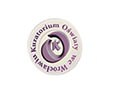Infidelity
22 October 2014
Telling someone that animals cheat in the same manner as people would probably not provoke a huge uproar. As a matter of fact, all of us can name some petty swindlers from the animal kingdom, hooligans that skilfully take advantage of other animals, not only of the same species, to pursue their own aims. However, if we specify that it concerns a marital infidelity, surely most people will look at us puzzled, awaiting further details.
Yes – a marital infidelity occurs between animals; it can even be concluded that it is quite common! When we watch a pair of great tits, in which the male continuously supports the female that incubates the eggs by feeding her, we may think: “For sure that is a great example of fidelity to a mate.”
Nothing could be further from the truth. Scientists have been gathering evidence of marital infidelity in numerous groups of animals for years. The research has been joined by evolutionary biologists from the Institute of Environmental Sciences of the Jagiellonian University, as well. The Population Ecology Research Team does not only look for the cases of infidelity in birds; first of all they strive to find the answer to the question of why infidelity happens.
Disloyalty – risky or beneficial?
In the avian world, it is the female that looks for extra mates, but by doing so she risks being abandoned and bringing up the offspring alone, as soon as her actual mate realises that he has been cheated on. What is more, none of the extra mates would support the abandoned female in taking care of the offspring “out of wedlock”. Interestingly, the scope of such avian infidelity is simply shocking! Females of Polish bird species – for example tits, spotted flycatchers or blackcaps – may bear 10-40% of their offspring with extra males. There are some species, however – for example tree swallows – in the case of which entire nests (i.e. 100% of the young!) may be hatched as a result of infidelity. Obviously, a female faces a great risk when deciding to take infidelity this far. So what are the reasons for avian infidelity?
It turns out that potential mates may be divided into “better” and “worse” – especially with regards to genes. Genetically privileged mates can pass on more profitable genes to their offspring (the “good genes” hypothesis), providing them with the certainty of survival in a hostile environment, for example by improved physical condition or immunity against pathogens. A female may want to increase the quality of genes, at least in part of her offspring, by letting a male, different from her actual mate, become the father of several young ones.
Searching for traits of profitable genes is not trivial as it requires scientists to recreate “the infidelity history” in a range of avian families in order to identify all nestlings hatched “out of wedlock”, and then compare the “legitimate” offspring with the “out-of-wedlock” offspring. Such comparisons may directly indicate the differences in “quality” between nestlings hatched as a result of infidelity and nestlings conceived maintaining “marital fidelity”. Despite its laboriousness, studies on avian infidelity and the “good genes” that drive it are conducted by numerous scientists all over the world.
The issue of the “good genes” influence on animal infidelity has become one of the greatest mysteries of evolution, above all due to the elusiveness of such genes and difficulties in the precise measurement of their effects. The Institute of Environmental Sciences of the Jagiellonian University is also taking action to settle this issue by conducting extensive research.
Eeny, meeny, miny, moe – the father is…
“Methods adopted in our research slightly resemble the work of a forensic laboratory. By analysing a large population of Eurasian blue tits inhabiting the Swedish island of Gotland, we can obtain data concerning infidelity in hundreds of nests. It all starts with finding evidence of infidelity. For this purpose we use small blood samples collected from all the birds in question, both the parents and the offspring,” says Dr Szymon Drobniak from the Population Ecology Research Team of the Jagiellonian University. Blood samples are subsequently used as DNA sources which allow for an accurate identification of any nestling’s actual father by means of specifically selected genes. The resulting family tree includes more than 800 young ones and 400 adults each and every year. It shows that more than 1/3 of the avian families under examination have at least one nestling hatched “out of wedlock”. Every young one in the population is also precisely measured. Any properties related to the size, immunity or condition are of paramount importance. Although looking for “good genes” effects is as painstaking as looking for a needle in a haystack, tracing their influence seems to be quite probable.
Marriage of genes and environment
The potential “good genes” effect is manifested to the largest extent in the so-called immune response of the nestlings which proves how well a given individual deals with infections. It turns out that nestlings hatched as a result of infidelity demonstrate a stronger immune response than their sibling begotten by the actual mate of the female. It means that a female tit may “improve” the immune response in some of her offspring by selecting extra mates for herself; it will provide them with an enhanced ability to handle natural infections. It is quite important information, given the fact that such individuals have a greater chance of survival. So, did we detect the “good genes” effect that would make the offspring born as a result of infidelity superior?
It turned out that the solution was not that obvious. Indeed, nestlings that were born “out of wedlock” proved to be more immune, but only in the nests where development conditions were disadvantageous or stressful (e.g. as a result of a limited amount of food or fierce competition between the nestlings). Therefore, it seems that “good genes” are not a simple mechanism that always affects all individuals in the same manner.
Their effects depend on external conditions to a great extent. This correlation between “good genes” and the environment is not a new concept.
Not all of the scientists who have been dealing in the studies on avian infidelity have managed to demonstrate the superiority of the “extra-pair” nestlings over the remaining offspring. It has been explained by the fact that the “good genes” effects are muted by the environment itself.
“Our research was the first to directly prove that the environment may decide whether the “good genes” would actually become “good”, says Dr Drobniak.
More questions…
The research is also a step towards the change of perspective on evolutionary biology. It should not be forgotten that evolution does not entail only fossil records and our prehistoric ancestors. Evolutionary biology is a lively discipline that provides answers to the most current questions in biology and at the same time is applied in medicine, agriculture and genetics. The research conducted by the Population Ecology Research Team has already reached a wider audience. “If evolutionary biology finds new supporters due to our work, we will be very proud because such achievement is equal to ground-breaking publications in scientific journals”, concludes Dr Drobniak.
Project name: The profits of extra-pair copulation under changed environmental conditions in Eurasian blue tits (Cyanistes carelueus) (Financed by: Polish National Science Centre – Narodowe Centrum Nauki, NCN).
Team members: Dr Szymon Drobniak; Dr Aneta Arct; Prof. Mariusz Cichoń



























